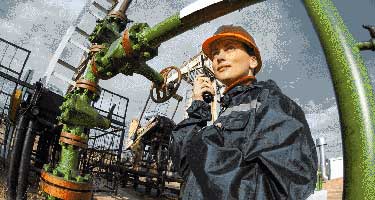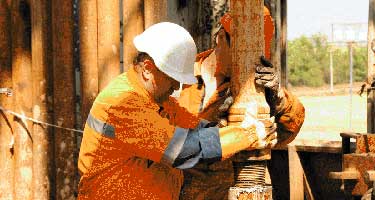How Mobile Technology is Transforming the Oil and Gas Industry
More than half a million Americans and about 3.5 million people worldwide are employed in the oil and gas industry — an industry that both fuels the world’s economy and is among the most dangerous. The unique safety challenges posed by oil and gas excavation, as well as the financial, environmental, and human consequences of incidents like April 2010’s Deepwater Horizon drilling rig explosion, have finally spurred greater interest in the adoption of mobile technology.
What’s more, the nature of this global industry and its scattered stakeholders begs for the streamlined communications solutions, real-time information access, and seamless information integration that mobile applications can offer. GoCanvas offers an entire section of the Application Store dedicated to the Oil & Gas industry, you can view them here.
But just how quickly is the industry onboarding apps and mobile devices at the worksite, and what types of technology are key decision-makers leaning toward? The latest numbers offer insight.

Check out even more resources

Manage Risk for Oil and Gas Companies With a Risk Assessment Checklist
Today, the challenges faced by the oil and gas industry are considerable. Effective business leaders and managers must thoroughly understand them to determine…

Solutions to Waste Management Issues For Oil & Gas Companies
Waste management compliance is important in every industry. The oil and gas industry, in particular, has a strong risk of waste emissions…

4 Ways Big Data is Transforming Oil and Gas
Oil and gas companies are getting smart about using the data they collect to gain insights and manage people, equipment, and worksites more effectively…
Connect with an Expert Today.
We’ll help you put together the right solution for your needs.
Text Version
HOW MOBILE TECHNOLOGY IS TRANSFORMING THE OIL AND GAS INDUSTRY
Mobile technology has seemingly endless potential to improve safety practices and business processes. And with devices getting ever more rugged, alleviating fears about damage, the adoption of mobile in the field is likely to become even more common.
Consider: Enterprise mobility already ranks as a top 3 technology priority for energy companies. 71% of workers in the oil and gas sector are currently using mobile devices for work purposes, especially senior decision-makers and those engaged in field operations and technical roles. 61% of oil and gas professionals surveyed said their organizations were in the process of rolling out a mobile strategy.
Where mobility is effective
Top 3 mobile strategies for implementing Mobility: 66% Improve communication and collaboration among team members. 48% rapidly deliver actionable information to key decision-makers. 42% Increase customer intimacy. 72% of respondents said that workers use devices in the field to improve safety. 54% of oil and gas executives have seen improvement in health and safety after adopting mobile devices.
Tablet, smartphone, or laptop? – 64% of respondents said that their employees access information In the field using laptops. 38% said they use smartphones.
Roadblocks to implementation – 46% of respondents said that unavailable or unreliable wireless connections were the main constraints faced in remote or hazardous locations. 49% were concerned about the security of mobile data as an obstacle to expanding mobile use.